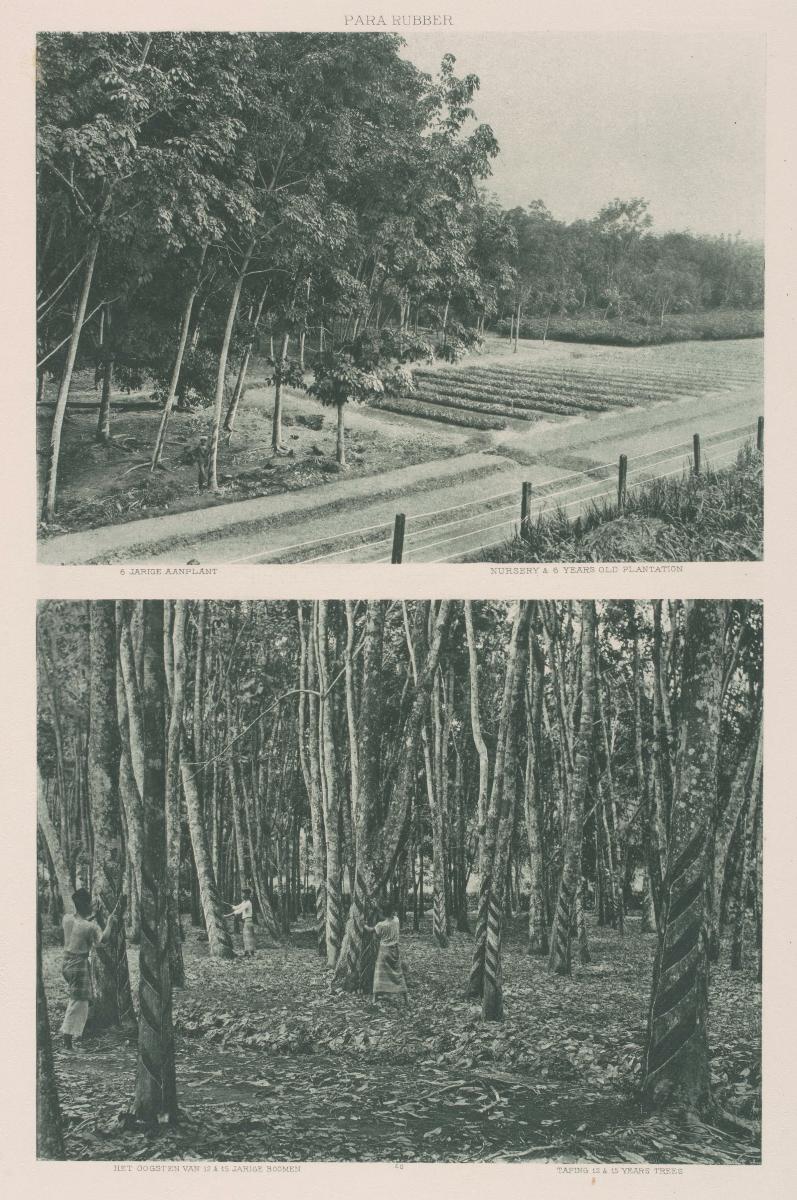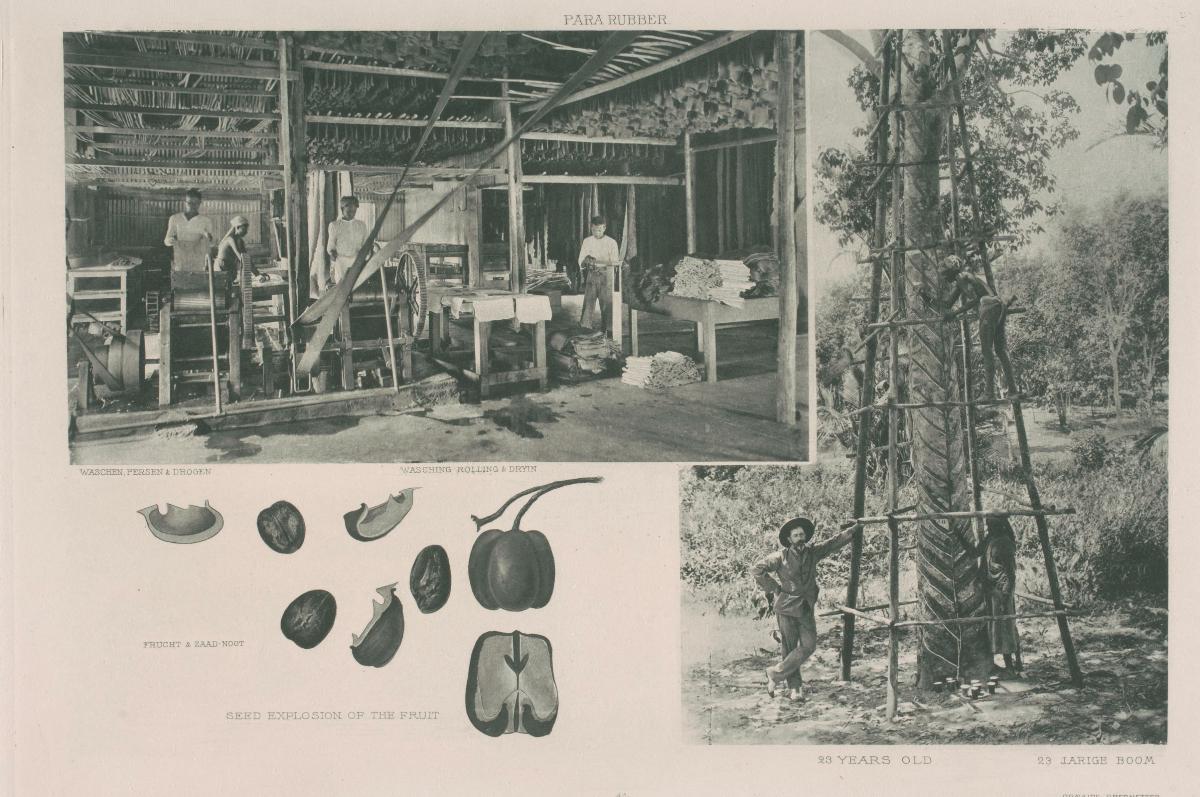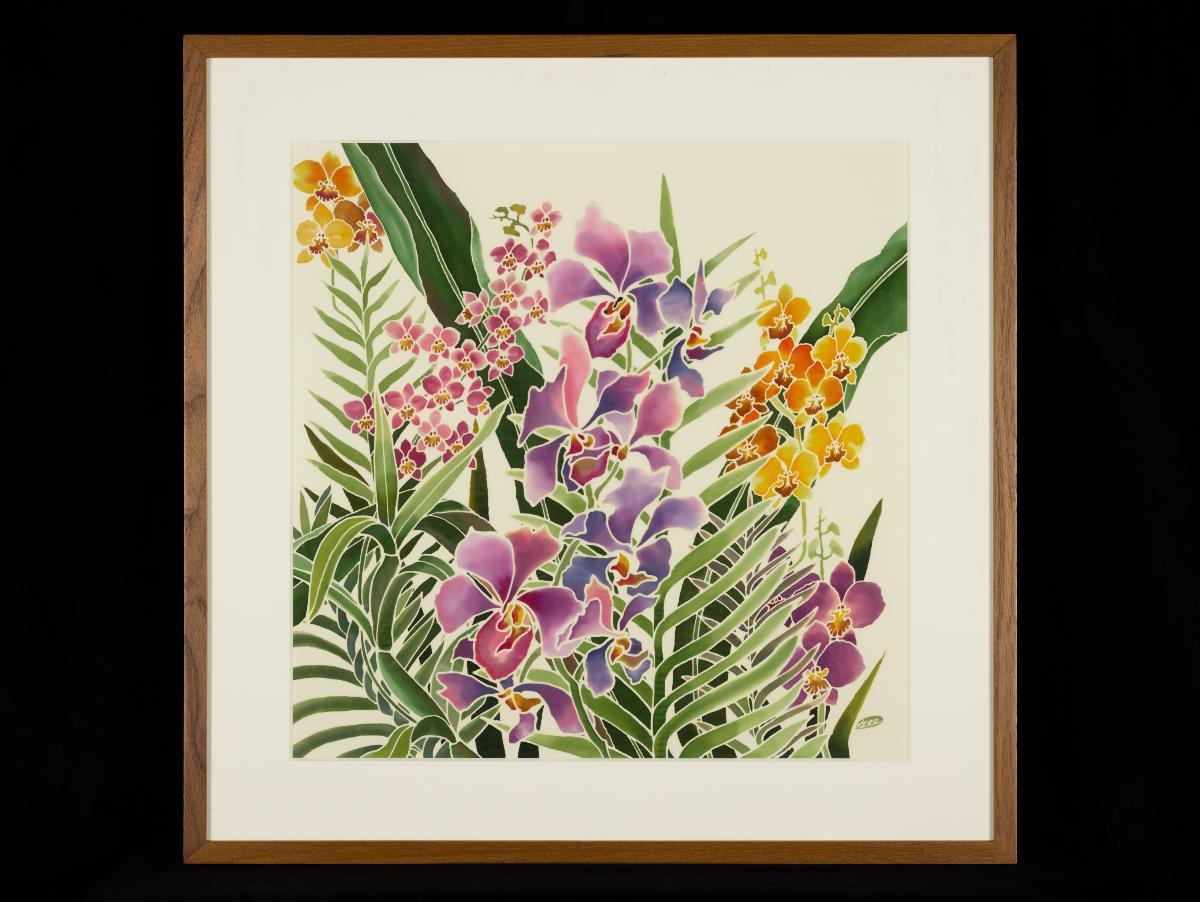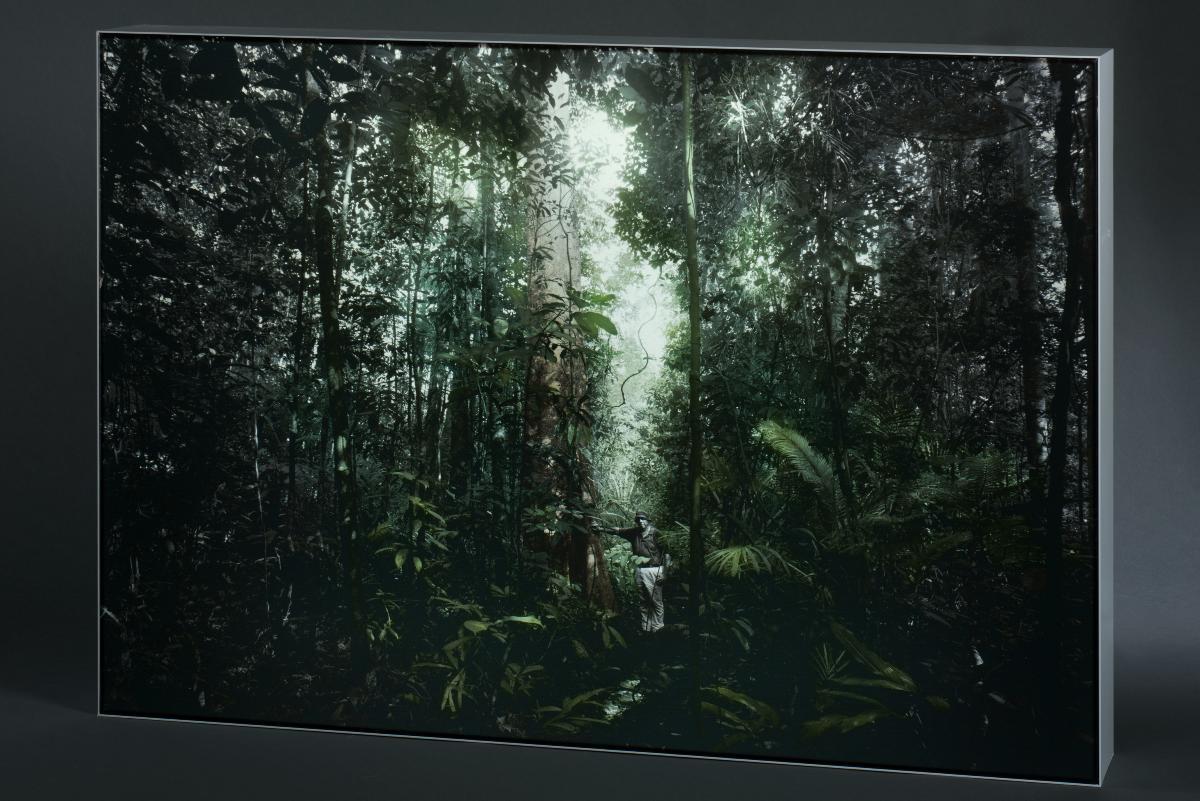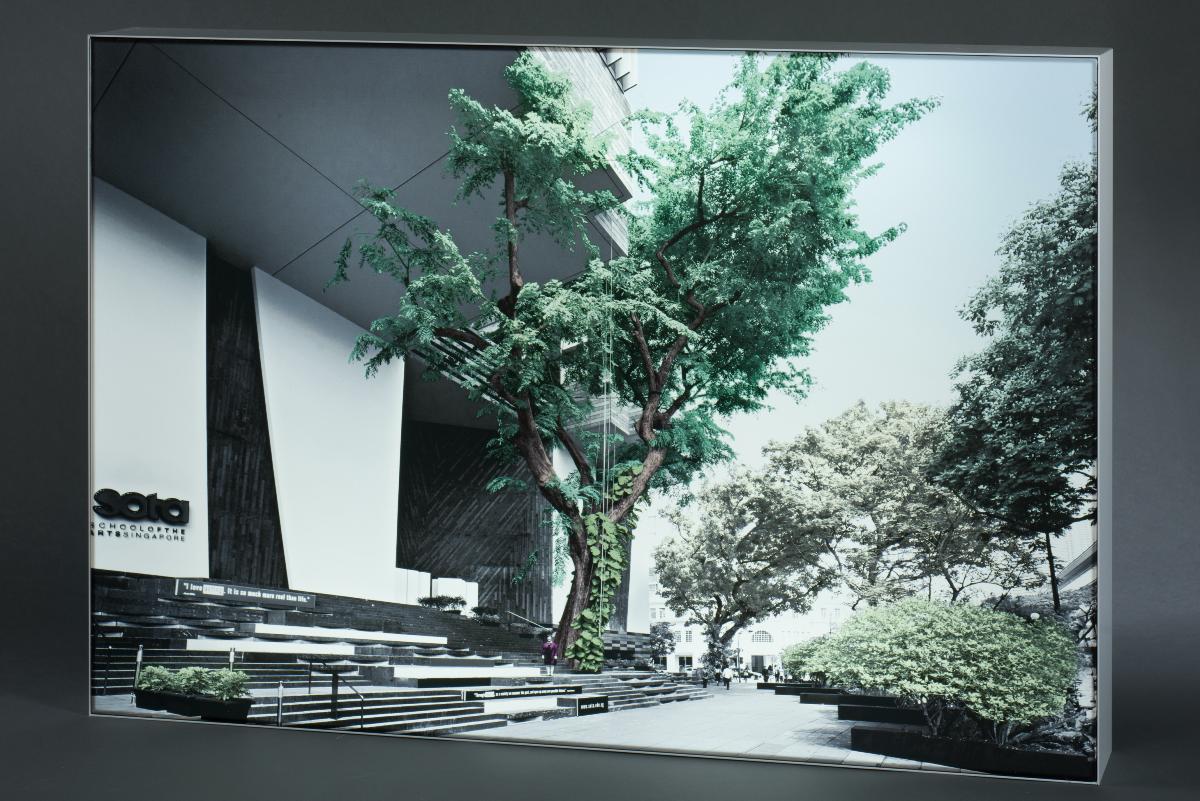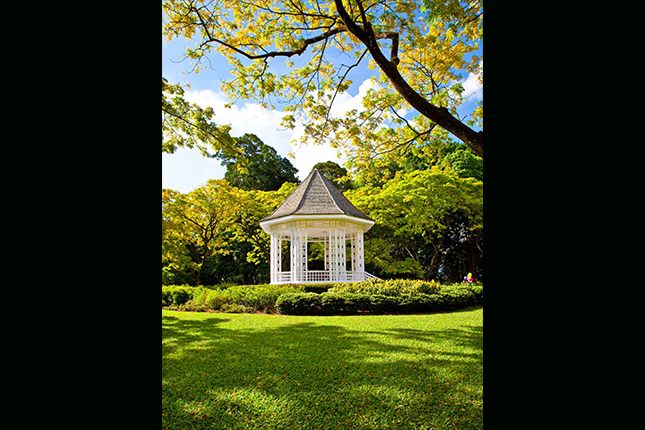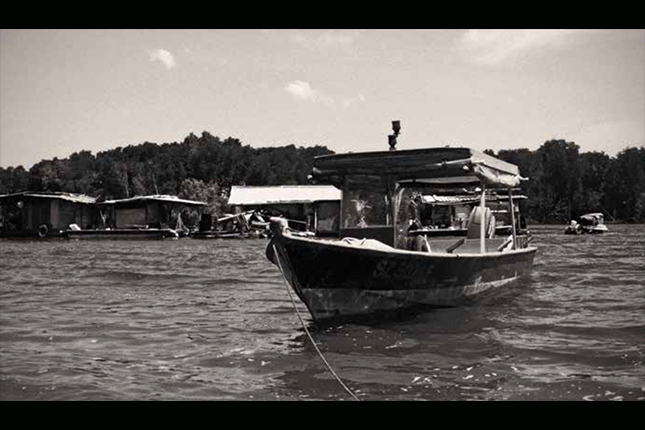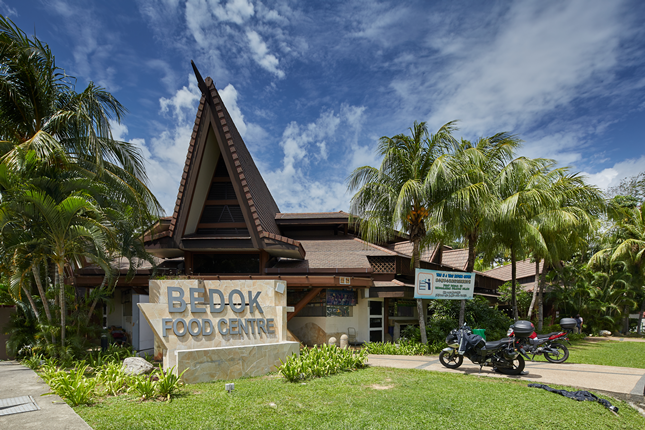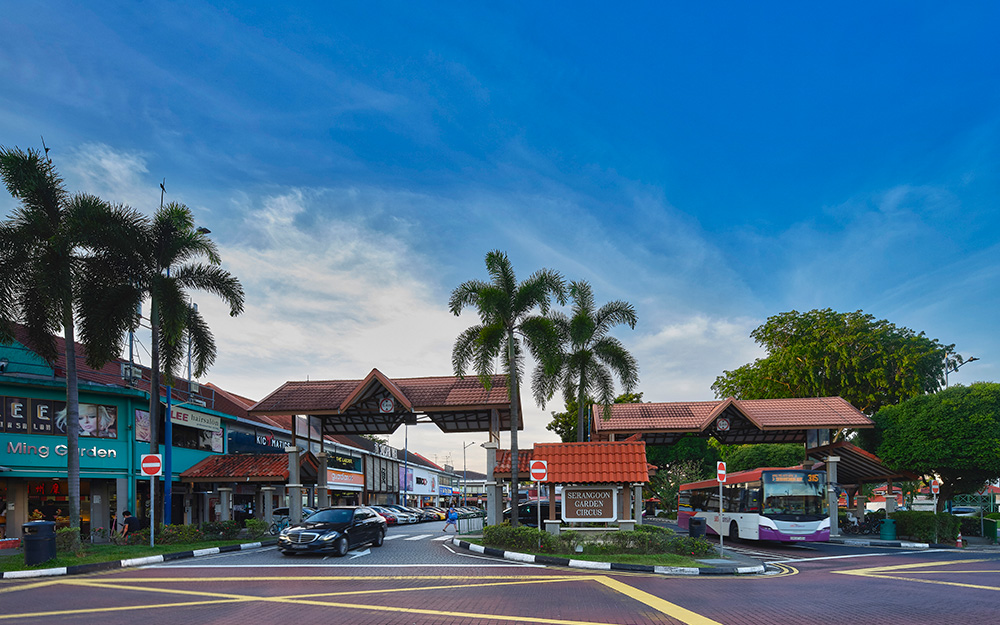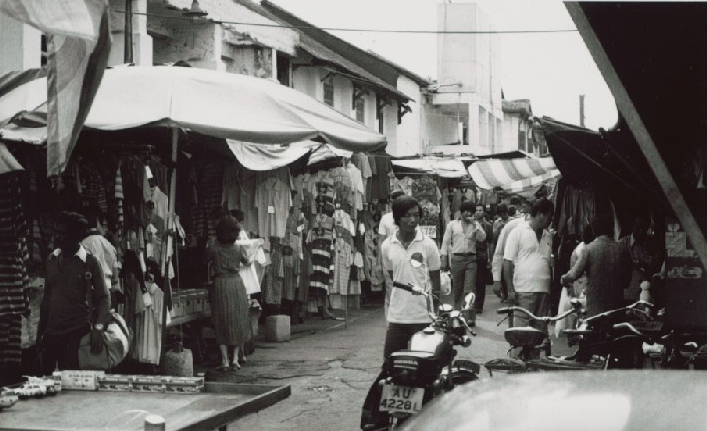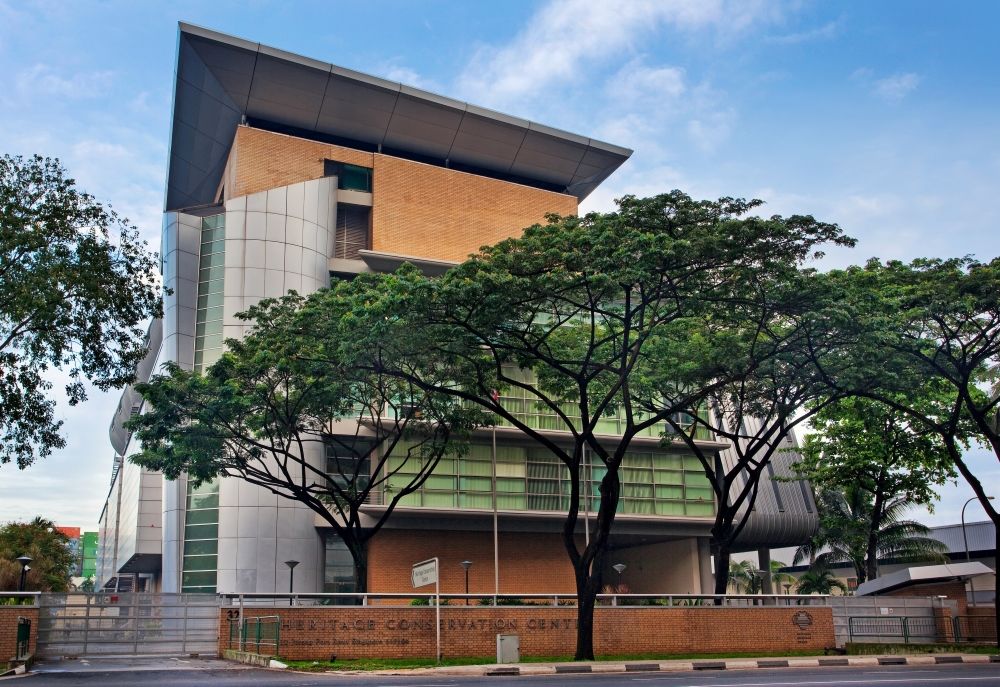The Para rubber derives its name from a Brazilian state called Para, where the tree first grew in the rainforests there. Soon the tree was cultivated commercially. Unlike the jungle trees, the plantation trees are kept short. The white or yellow sap, called latex, is found in the latex vessels in the bark of the tree. These vessels spiral up the tree and the liquid is harvested through incisions. The cuts are made orthogonally on the bark and the sap is collected in small containers. Usually the latex is harvested when the trees are five to six years old. From 1920s onwards, rubber was the major commercial crop grown in East Sumatra. It had high export value and great fortunes were made in the rubber industry.




